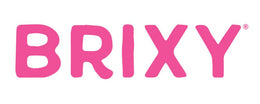How To Spot Soap Masquerading As A Shampoo Bar
In the realm of sustainable and eco-friendly personal care products, shampoo bars have risen to prominence as convenient and planet friendly alternatives to traditional liquid shampoos that come in plastic bottles. However, many still hesitate to make the switch because visually, they see a soap bar. And nobody wants to take a bar of soap to their hair.
Thus, to remove any doubt that what you purchase is in fact quality hair care, we’re here to share how to easily spot soap masquerading as shampoo. So, let’s get into it!
1. Ingredients And Formulation
Shampoo bars and soap have distinct ingredient differences. Shampoo bars are specially formulated to cleanse the scalp and hair, removing excess oils and dirt without stripping away natural oils. They typically contain a blend of gentle surfactants and nourishing ingredients such as essential oils, plant extracts, and vitamins like provitamin B. Look for ingredients such as sodium cocoyl isothionate, a gentle yet effective cleanser that is naturally derived from coconut oil.
Soap, on the other hand, is primarily designed for cleansing the skin on your body and hands. It typically contains stronger surfactants that are much too harsh for hair, but work really well to remove dirt and grime from skin. Sodium cocoate is a perfect example. It’s one of the most widely used ingredients in soap, but it’s way too harsh for your hair. If you see sodium cocoate as an ingredient in your shampoo bar, this is just a bar of soap with marketing slapped on it to call it shampoo. Avoid this ingredient in your hair care as it will blow up the cuticle of the hair and cause moisture loss, frizz and will ultimately dry out your strands.
2. pH Balance
A significant difference between shampoo bars and soap lies in their pH levels. Our scalp has a mildly acidic pH (around 4.5-5.5), which helps maintain a healthy environment for the hair and scalp. Shampoo bars are formulated to have a pH level that falls within the range of the scalp's natural acidity. Conversely, soap tends to have a higher pH level, which can be alkaline and not entirely suitable for the scalp. Using soap on your hair can lead to dryness, frizz, and an imbalance in natural oils.
3. Essential Oils and Additives
Shampoo bars often contain essential oils and natural additives that cater to specific hair types or concerns. For instance, rosemary oil is beneficial to stimulate the scalp, while argan oil adds moisture and shine to the hair. These ingredients are carefully selected to enhance the shampoo bar's performance and provide a more customized hair care experience.
On the other hand, soap usually incorporates fragrances, physical exfoliants, or moisturizing elements aimed at nourishing the skin and leaving it soft and supple. The focus of these additives is to improve the overall bathing experience and promote healthy skin. You may find some of the same plant based hydrating ingredients in shampoo bars and soap bars such as shea butter, cacao seed butter or argan oil. The thing to remember is that along with these hydrators, look at the cleansers to be sure you aren’t buying a soap bar that says it’s shampoo.
Understanding the differences between these two products empowers us to make more informed decisions when it comes to personal care. Incorporating shampoo bars and soap into our daily routines can not only benefit our individual well-being but also contribute to a more sustainable and environmentally-friendly lifestyle. So, next time you reach for a solid bar in the bathroom, make sure you choose the right one for the right purpose. Happy lathering!

